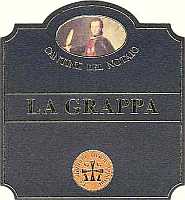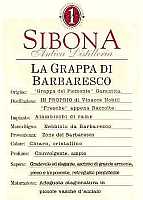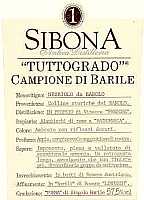
Wine Culture and Information since 2002 - Volume 22
 Wine Culture and Information since 2002 - Volume 22 |
|
ChestnutTypical fruits of autumn, companion of cold nights together with friends and a good glass of wine, chestnut is also an ingredient of cooking and pastry |
|
|
|
The chestnut “castanea sativa Miller”, belongs to the beech family, is a tree with caducous leaves and its height can also reach thirty meters (98 feet). It has a large trunk and a rounded foliage, the bark is smooth and shows small white spots. The leaves, that can be long 20 centimeters (7.8 inches), have a short stem and a narrow lanceolate shape, the border of the leaf is serrate, the young leaves are hairy whereas adult leaves are smooth and shiny. Flowers are separated: male flowers are contained in glomerules inserted in a spike at the base of the leaves, the female flowers are enclosed in an involucre - called dome - made of many bracts. The fruit is composed by one to three achenes, called chestnuts, enclosed in a brown colored and shiny pericarp which is hairy in the inside. The part known with the name of chestnut husk, is the dome of the female flower which grew up with the fruit and, when it has reached full ripeness, it opens up in four parts covered by many prickles.
The chestnut is a very ancient plant and it was present since prehistory (since the Cenozoic era), it is very longeval and in England is famous a tree called “the big tree of Tortworth” which according to a legend it is believed to be more ancient than their King John; another plant in the Greenwich park is considered millenary. It grows on a very large area of the planet, in Europe, in some parts of Asia, Greece, Turkey, Algeria, in the Balkan peninsula and in America. Chestnut is a very longeval tree but its growth is very slow, it does not like limestone and prefers deep and well drained soils, it begins to bear fruits at around 25 years of age and reach its apex at around 50. Chestnuts are typical fruits of autumn, they spontaneously fall from the tree from September to December, and it is right in this period they are being harvested. Chestnuts are mentioned by Virgil both in the second book of the Georgics, where he suggests to graft chestnut with a beech, as well as in the Eclogues where he mentions chestnuts cooked with milk and consumed with cheese. In the 1700's in the tables of the noble classes appeared the firsts “marrons glacée” and in the same period in Paris the pharmacist Bonneau invents a chocolate made of 50% of cocoa and 50% of toasted dried chestnut flour. Chestnut is a fruit currently looked for during autumn, because it is suited for the preparation of salty recipes and sweet recipes, it is a wholly genuine and natural food, it does not require any chemical treatment or phytotherapy, it is a product that meets the canons of organic culture. Today when referring to chestnuts, they are classified into chestnuts and marrons chestnuts, even though the distinction is not always clear. Chestnuts are the fruit of the wild tree, having a pretty variable shape, size and flavor even in case they were produced by the same tree; marrons chestnuts are the fruit of selection and grafting which gave origin to a superior quality plant and have standard characteristics. Chestnuts, since ever, have represented a precious help in the nutrition of poor people. They were once known with the name of “bread of tree”, they have been a precious resource for survival. When traditional grains were not enough for the nutrition of all the family members, chestnuts were used instead, boiled, roasted or in form of flour. The chestnut is a patient tree with little demands, it took little of time as well as little efforts to the farmers while giving a fruit that, thanks to its characteristics and nutritional qualities, has allowed people to survive during hard times. Chestnuts are also used to feed animals.
|
||||||||
|
Chestnuts are an atypical fruit, they are rich in complex carbohydrates, just like grains. Chestnuts contain fibers, a high quantity of mineral salts, in particular potassium, phosphor, sulfur, magnesium, chlorine, calcium, iron and sodium; as well as vitamins B1 and B2 and a remarkable quantity of vitamin C (almost as much as lemons), 4% of aminoacids, 40% of starch (glucose). The cooking process transforms part of the starch into simple sugars, therefore giving the characteristic sweetness. One hundred grams of fresh chestnuts contains about 200 Kcal, whereas dried chestnuts provide 370. In dried chestnuts is absent vitamin C, which is lost during the drying process. Chestnuts, because of their high content in proteins, vitamins, mineral salts, lipid and carbohydrates, are a very nutritive food, they are tonics for muscles and veins, antinfective, reconstituent and antianemic. Chestnuts are good for elder people, kids and convalescents, are a good remedy for varices and hemorrhoids, prevent the aging of the skin and, last but not the least, they are easily digestible. Chestnut flour is used in many recipes as a substitute for wheat flour for people suffering from grains intolerance. One hundred grams of chestnuts contains about 200 Kcal (of which 7% from proteins, 84% from carbohydrates and 9% from lipids), 0.08 mg Vitamin B1 (Tiamin), 0.28mg Vitamin B2 (Riboflavin), 1.11mg Vitamin B3 (Niacin), 43,00mg Vitamin C.
|
||||
|
Few rules for the harvesting for personal consumption. First of all avoid fenced chestnut woods or private properties, in such cases it is good to ask for permission. Have the highest respect for wood. Take a stick to be used for the removal of leaves and to open chestnut husks. It is not advisable to use plastic bags for harvesting chestnuts; it is preferable to use a wicker basket in order to allow fruits to breathe. Do not destroy or harvest bad or rotten chestnuts because they are indispensable for the balance of wood. Discard soft, powdery or opaque looking chestnuts because it is more likely they are not edible anymore.
|
|
Because of the high demand, chestnuts have become a pretty important source of commercial profits, therefore they undergo some phases of processing which allow to prolong preservation times and to broaden the market area, both in space and in time. After harvesting, fresh chestnuts are divided according to their size. This first phase will determine the destination of the fruits: some will be destined to sale, the others will undergo other processing phases. Thanks to the immersion in water it is possible to determine good chestnuts from bad ones or potentially bad ones, as bad chestnuts are lighter and tend to float. The next phase consists in a thermal treatment which greatly reduce bacteria of the fruit, then follows brushing and polishing. At the end chestnuts are being packed, kept in refrigerators and therefore ready for commercialization. Discarded chestnuts not considered good for commercialization, are not eliminated and, by means of specific machineries, they are peeled, dried, packed and then commercialized. The residual part of the processing, that is broken fruits, are ground and used for the production of chestnut flour.
|
|
Chestnut harvested and destined for personal consumption should be dried by spreading them in a wooden surface, they must not be kept for a long time because they easily tend to wither. Some keep the fruits, incised, in the refrigerator. Tradition teaches that for a good keeping of chestnuts, it is advisable to follow the practice of novena. The system consists in plunging the chestnuts in a bucket filled with water at room temperature. During the first day the chestnuts will be stirred in order to have the bad exemplars to float and without changing the water. This practice allows water to encourage a slight formation of lactic fermentation that will acidify the content. After nine days rinse and dry the chestnuts on a wooden surface while paying attention to avoid any contact with metallic materials. At the end of novena, keep chestnuts in a cool place and in jute bags, for a period of 2 or 3 weeks, or freeze them in a refrigerator while remembering, in this specific case, to cut the peel. Before purchasing chestnuts, it is good to remember the fruits must be hard, the peel - when pressed with fingers - must not sink. The price of chestnuts usually depends on their size, however a bigger chestnut is not sweeter or better than a small one. Generally speaking, chestnuts of average or big size are more suited for roasting, whereas small sized chestnuts are more suited for boiling. Roast chestnuts are less digestible of boiled chestnuts because of the lesser homogeneity of cooking.
|
AquavitaeReview of Grappa, Distillates and Brandy |
|
|
| Distillates are rated according to DiWineTaste's evaluation method. Please see score legend in the "Wines of the Month" section. |

|
|
Grappa di Aglianico del Vulture |
|
| Cantine del Notaio (Italy) | |
| (Distiller: Distilleria G. Bertagnolli) | |
| Raw matter: Pomace of Aglianico | |
| Price: € 25,50 - 500ml | Score: |
| This grappa is colorless, limpid and crystalline. The nose is intense with pleasing aromas of dried plum, blackberry, raspberry, walnut-husk and hazelnut with almost imperceptible alcohol pungency. The taste is intense, good smoothness and balanced sweetness, the alcohol is perceptible although not aggressive and dissolves rapidly, agreeable. The finish is persistent with a pleasing sweet hint and flavors of dried plum and raspberry. A well made grappa produced with discontinuous method in steam operated alembic stills. Alcohol 42%. | |

|
|
Grappa di Aglianico del Vulture Affinata |
|
| Cantine del Notaio (Italy) | |
| (Distiller: Distilleria G. Bertagnolli) | |
| Raw matter: Pomace of Aglianico | |
| Price: € 36,00 - 500ml | Score: |
| This grappa shows an intense amber yellow color, limpid and crystalline. The nose reveals intense and clean aromas of vanilla, caramel, hazelnut, dried plum, licorice, honey, dried fig and chocolate with almost imperceptible alcohol pungency. The taste is intense and smooth, good balanced sweetness, perceptible alcohol pungency, not excessively aggressive which dissolves rapidly, agreeable. The finish is persistent and round with pleasing sweet hint and flavors of dried plum, honey, licorice and hazelnut. A well made grappa produced with discontinuous method in steam operated alembic stills and aged in barrique for about 30 months. Alcohol 42%. | |

|
|
Grappa di Barbaresco |
|
| Sibona (Italy) | |
| Raw matter: Pomace of Nebbiolo from Barbaresco | |
| Price: € 18,00 - 500ml | Score: |
| This grappa is colorless, limpid and crystalline. The nose denotes intense and clean aromas in which are perceived violet, plum, beeswax, licorice, cherry, strawberry and raspberry with imperceptible alcohol pungency. The taste is intense, good smoothness and balanced sweetness, the alcohol pungency is perceptible however dissolves rapidly, agreeable. The finish is very persistent with pleasing sweet hints and flavors of plum and licorice. A well made grappa produced with discontinuous method in steam operated alembic stills. Alcohol 44%. | |

|
|
Grappa di Barolo Tuttogrado Campione di Barile |
|
| Sibona (Italy) | |
| Raw matter: Pomace of Nebbiolo from Barolo | |
| Price: € 24,00 - 500ml | Score: |
| This grappa shows a pale amber yellow color, limpid and transparent. The nose reveals intense and pleasing aromas of vanilla, plum, licorice, raspberry, honey, hazelnut, dried violet and strawberry with perceptible alcohol pungency although not excessively aggressive. The taste is intense with very perceptible alcohol pungency even though it tends to dissolve rapidly, good and balanced sweetness. The finish is persistent with pleasing sweet hints and flavors of honey, hazelnut and raspberry. A well made grappa produced with discontinuous method in steam operated alembic stills and aged in oak casks. Alcohol 57.5%. | |
Wine Parade |
|
|
| The best 15 wines according to DiWineTaste's readers. To express your best three wines send us an E-mail or fill in the form available at our WEB site. |
| Rank | Wine, Producer | |
|---|---|---|
| 1 |
| Montepulciano d'Abruzzo Villa Gemma 1999, Masciarelli (Italy) |
| 2 |
| Turriga 1998, Argiolas (Italy) |
| 3 |
| Amarone della Valpolicella Classico Capitel Monte Olmi 1999, Tedeschi (Italy) |
| 4 |
| Harmonium 2001, Firriato (Italy) |
| 5 |
| Brunello di Montalcino Prime Donne 1998, Donatella Cinelli Colombini (Italy) |
| 6 |
| Riesling Cuvée Frédéric Emile 1999, Maison Trimbach (France) |
| 7 |
| Barolo Cicala 1999, Poderi Aldo Conterno (Italy) |
| 8 |
| Pinot Noir Napa 2002, Clos du Val (USA) |
| 9 |
| Aglianico del Vulture La Firma 2000, Cantine del Notaio (Italy) |
| 10 |
| Chablis Grand Cru Les Clos 2002, Domaine Billaud-Simon (France) |
| 11 |
| Jerez Fino Tio Pepe, Gonzalez Byass (Spain) |
| 12 |
| Moscato d'Asti 2003, Vignaioli di S. Stefano (Italy) |
| 13 |
| Château Roquebrun St-Chinian 2002, Cave de Roquebrun (France) |
| 14 |
| Uncut Shiraz 2002, Gemtree Vineyards (Australia) |
| 15 |
| Palazzo della Torre 2000, Allegrini (Italy) |
|
||||||||
|
DiWineTaste Polls
|
| |||||||
Privacy Policy | |||||||


| Copyright © 2002-2024 Antonello Biancalana, DiWineTaste - All rights reserved |
| All rights reserved under international copyright conventions. No part of this publication and of this WEB site may be
reproduced or utilized in any form or by any means, electronic or mechanical, without permission in writing from DiWineTaste. |